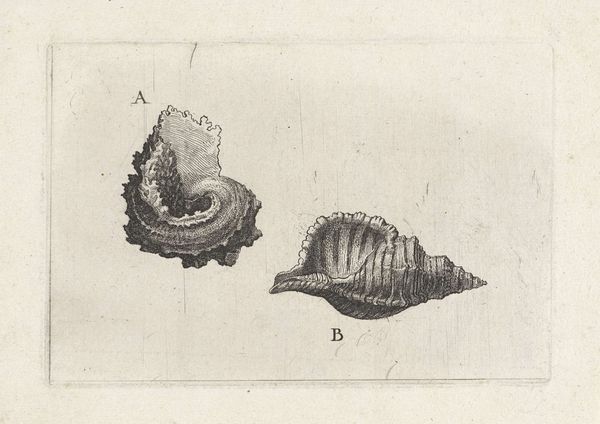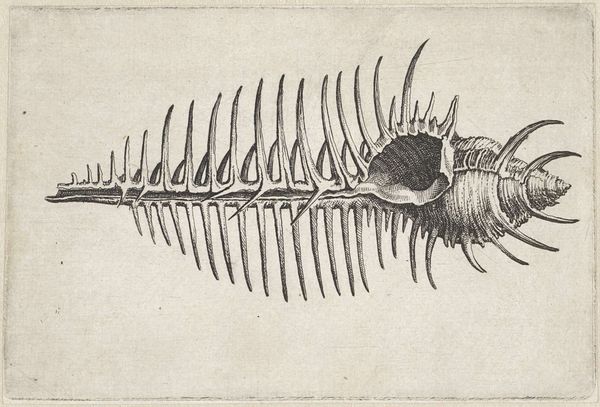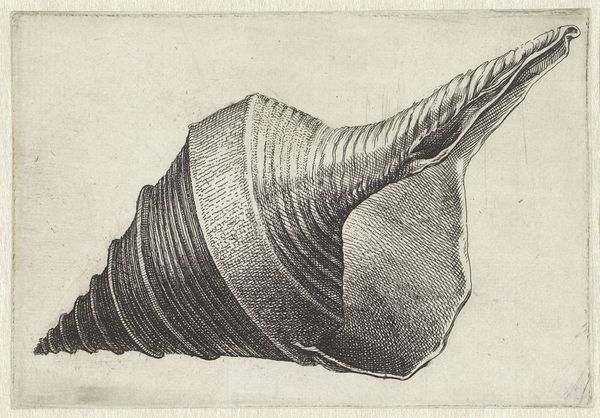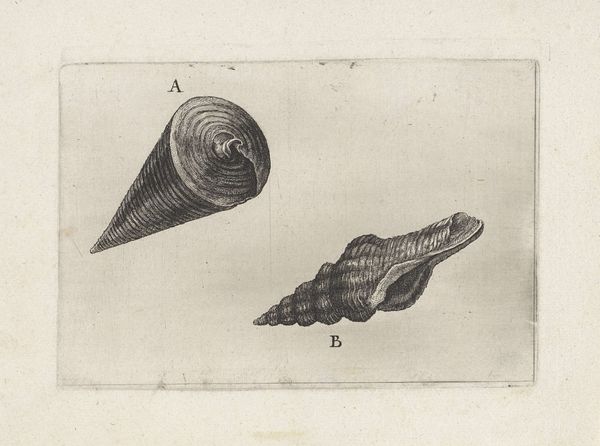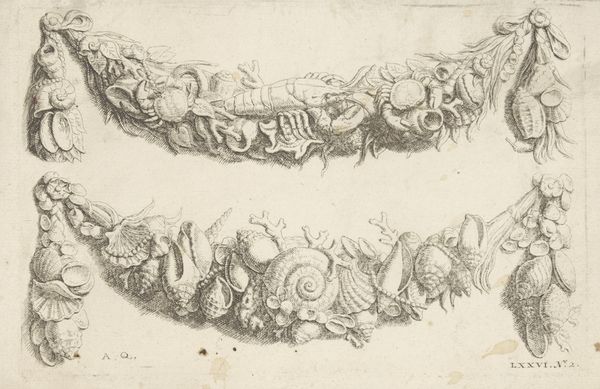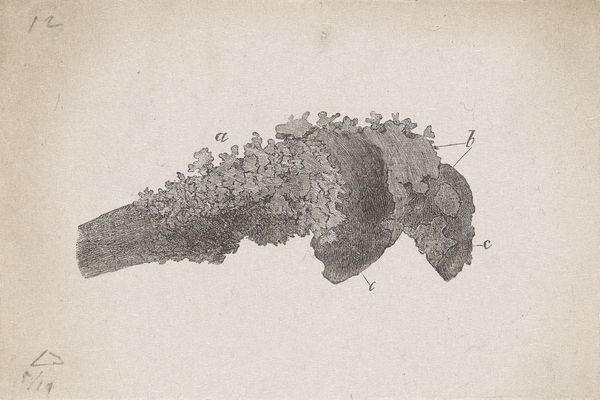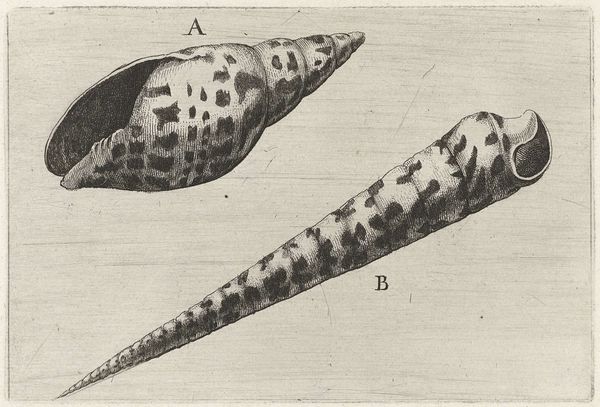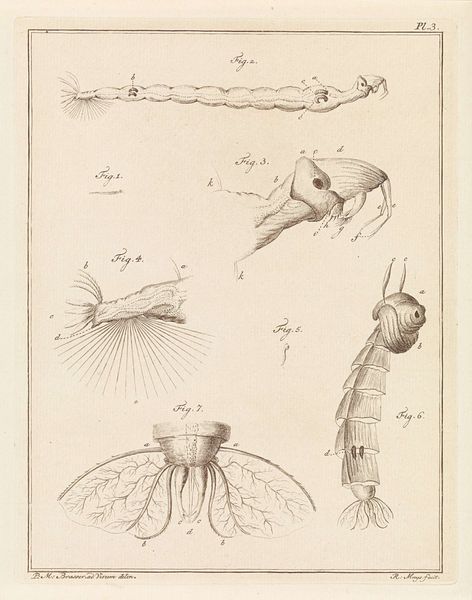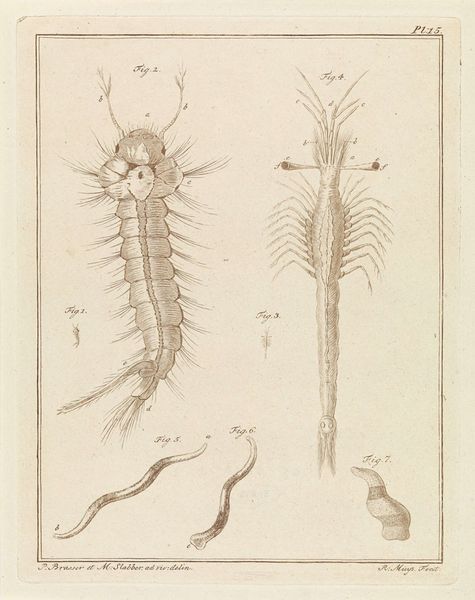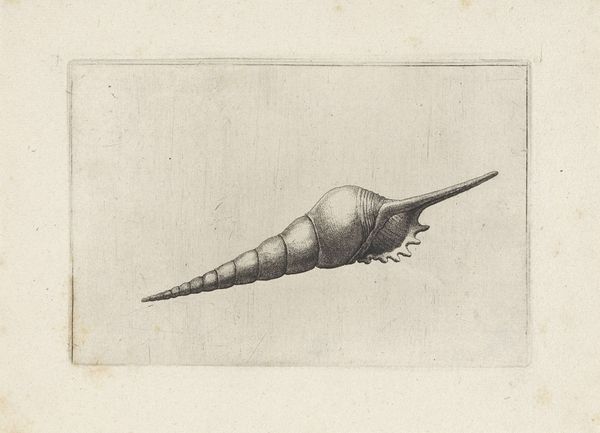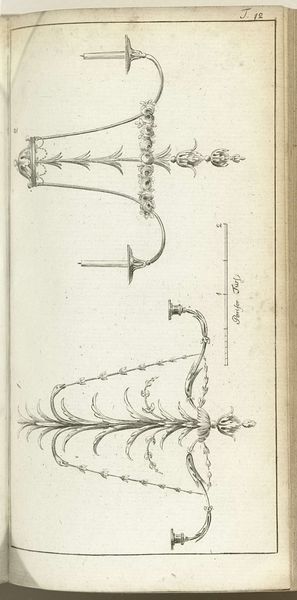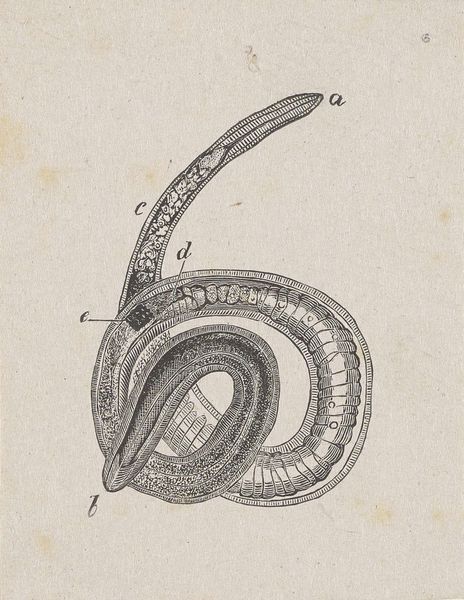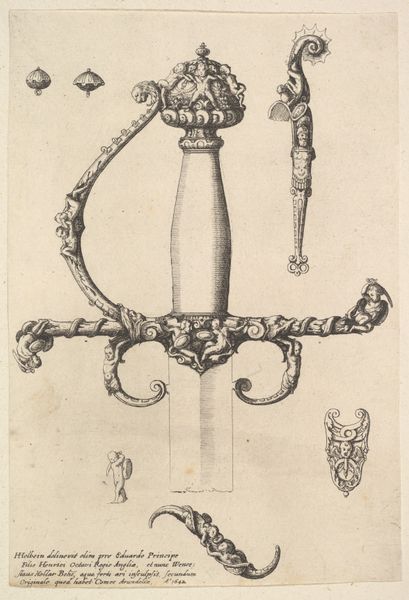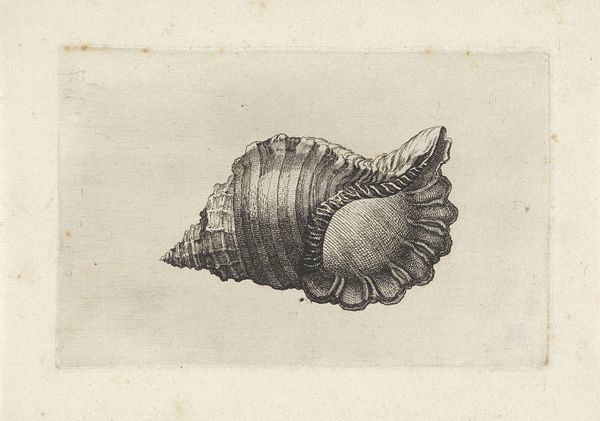
print, engraving
# print
#
form
#
line
#
engraving
#
realism
Copyright: Public domain
Wenceslaus Hollar created this image of shells using etching, a printmaking technique. Note how the stark contrast of light and shadow models the shells with remarkable precision. The two specimens, labeled ‘A’ and ‘B’, are rendered with a scientific exactitude that captures their spiral forms. Hollar uses line and form to not only depict but also to classify. Each delicate curve and ridge is a sign that speaks to the shell’s identity and place within the natural order. Here, representation becomes a form of knowledge. The shells' meticulously rendered textures invite a haptic response, creating an illusion of three-dimensionality on a two-dimensional plane. This etching invites us to reconsider our understanding of art's function. Is it merely an aesthetic object, or can it also serve as a tool for observation, categorization, and understanding of the natural world? This question remains open, inviting us to engage critically with the image and its implications.
Comments
No comments
Be the first to comment and join the conversation on the ultimate creative platform.
